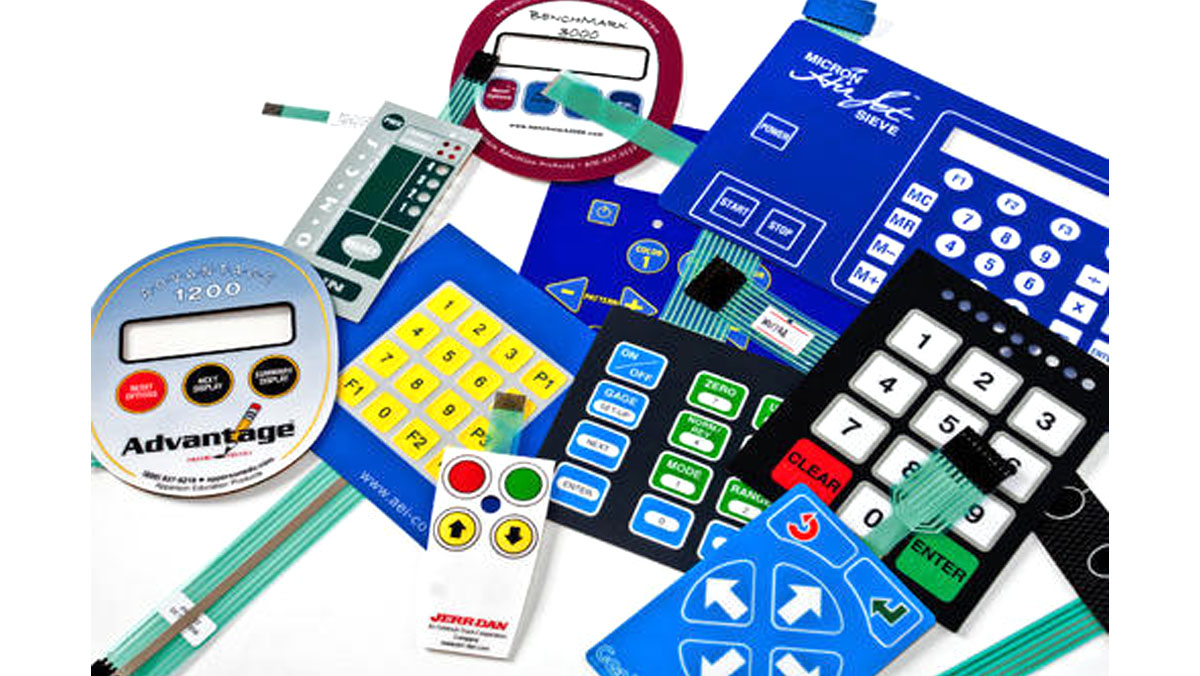Understanding Membrane Switches Over: The Secret to Reputable and durable Controls

What Are Membrane Layer Switches?
Membrane layer switches are an innovative solution in the realm of individual interface modern technology, incorporating functionality and style flawlessly. These tools work as an interface between users and electronic systems, integrating a number of parts right into a portable format. Usually created from flexible, thin layers of materials, membrane buttons are made to react to touch, making it possible for customers to communicate with equipment and digital tools properly.
The key components of a membrane layer button consist of a published circuit layer, visuals overlay, and a spacer layer that prevents unintentional activation. The graphic overlay can be customized to mirror brand name identification or individual preferences, improving appearances while making certain use. Membrane layer switches are typically used in various applications, including clinical tools, customer electronics, and industrial equipment, owing to their resilience and resistance to environmental variables such as dampness and dirt.
Among the crucial benefits of membrane switches is their ability to withstand wear and tear, making them perfect for high-traffic atmospheres. In addition, they are light-weight and call for marginal room, permitting ingenious styles in item advancement. Generally, membrane switches stand for a effective and practical choice for modern-day digital interfaces, marrying technology with user-centric layout principles.
How Membrane Layer Changes Job
The operation of membrane layer switches over depend upon a simple yet efficient mechanism that equates user input into digital signals. These switches contain multiple layers, commonly including a visuals overlay, a spacer layer, and a circuit layer. When a user presses the button, the leading layer deforms, permitting a conductive element in the circuit layer to reach a corresponding conductive pad on the bottom of the visuals overlay. This contact shuts the circuit and sends out an electronic signal to the tool, indicating that the switch has actually been triggered.
The layout of membrane layer switches can vary, however they often incorporate domes or tactile elements to supply responses to the customer, enhancing the overall experience - membrane switch. The materials utilized in membrane layer buttons, such as polyester or polycarbonate, add to their resilience and resistance to environmental aspects, consisting of dampness and dirt. Furthermore, the printed circuits are usually encapsulated, which secures them from deterioration gradually.
Advantages of Membrane Layer Buttons

In addition, membrane switches are understood for their longevity. Constructed from robust materials, they are resistant to dust, dampness, and physical wear, which significantly prolongs their life expectancy contrasted to typical mechanical switches. This longevity makes them particularly appropriate for high-traffic settings and applications requiring longevity.
One more considerable advantage is the convenience of cleaning and maintenance. The smooth surface of membrane switches reduces dust build-up and is usually unsusceptible spills, making them suitable for settings that require constant sanitization.
Furthermore, membrane switches offer a structured profile, bring about a thinner layout that can be incorporated into various devices without including mass. This function not only boosts the visual charm but also adds to a much more ergonomic product design.
Applications of Membrane Layer Switches
Straightforward and functional, membrane switches locate applications throughout a large range of industries, consisting of clinical devices, customer electronics, and industrial the original source tools. In the clinical field, these buttons are indispensable to tools such as analysis devices, client monitoring systems, and mixture pumps, where dependability and simplicity of cleaning are essential. Their capability to endure harsh settings and maintain functionality makes them excellent for such applications.

In customer electronics, membrane layer switches are used in products like microwaves, cleaning machines, and push-button controls - membrane switch. Their streamlined design enables intuitive interface, boosting the overall individual experience while giving longevity and resistance to damage
Commercial equipment likewise profits from membrane switches, especially in control panels for equipment and automation systems. These buttons provide security versus dust and moisture, making certain regular performance in challenging settings. Their personalized features allow makers to customize them go to these guys to details operational demands, improving efficiency and performance.
Picking the Right Membrane Layer Switch Over
When selecting a membrane button, it is important to think about various aspects that affect performance and suitability for specific applications. The primary considerations consist of ecological problems, tactile feedback, toughness, and style specs.
First, evaluate the operating environment; buttons revealed to wetness, chemicals, or extreme temperatures require details products to make certain long life and performance. Next off, examine the demand for responsive comments. Depending upon individual communication, some applications may take advantage of a responsive feedback to validate activation, while others might prefer a non-tactile layout for visual factors.
Resilience is one more important element; membrane buttons need to be created to endure frequent use, influences, and abrasion. Make certain the selected button can withstand the expected lifecycle, particularly in high-usage scenarios.

Verdict
To conclude, membrane layer changes act as essential parts in the style of trusted and long lasting control systems across various sectors. Their compact layout, integrated with robust building and construction and adjustable features, improves user communication while guaranteeing longevity popular environments. The convenience of membrane switches over permits customized options that meet certain operational requirements, reinforcing their value in modern innovation. As industries proceed to evolve, the relevance of integrating reliable membrane button solutions can not be overstated.
Membrane layer switches represent an essential aspect of modern interface style, mixing functionality with resilience in different applications.Membrane layer buttons are an innovative solution in the realm of individual interface innovation, incorporating capability and layout seamlessly. Usually built from versatile, slim layers of products, membrane layer buttons are created to react to touch, enabling individuals to connect with equipment and digital tools effectively.
The design of see this page membrane layer buttons can differ, yet they usually incorporate domes or tactile elements to offer feedback to the user, enhancing the total experience.In verdict, membrane layer switches over offer as necessary elements in the style of resilient and trustworthy control systems throughout numerous sectors.